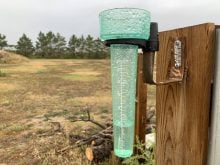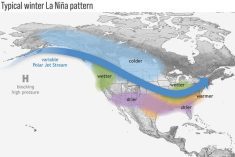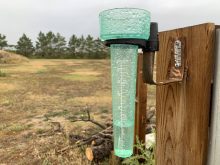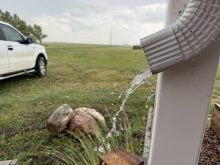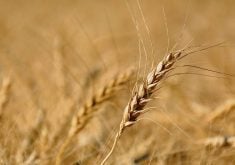It’s no surprise to anyone farming in southern Alberta, but drought conditions continue to worsen in the region after yet another very dry month.
AgCanada’s Drought Monitor expanded the areas classified as being in extreme drought (a D3 rating) or severe drought (D2) after the south received only 40 per cent of normal precipitation in April.
“Soil moisture conditions at a depth of 120 centimetres suggested exceptionally dry conditions (less than once in 50-year frequency) along the southern Alberta border with the U.S. as well as near the city of Brooks,” according to the monitor’s latest report, which reflects conditions as of April 30. “Annual precipitation deficits were reported at 110 to 220 millimetres below normal for southern areas in Alberta.”
Read Also
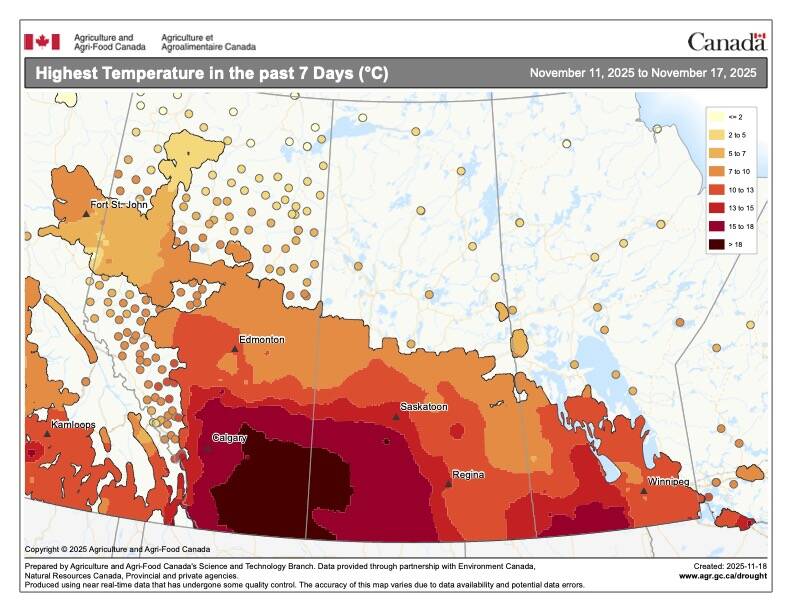
Is a weather station right for your farm?
Weather stations could make a great Christmas gift for the farmer in your life.
Having dryness extending to 120 centimetres — that’s four feet — is reflected on the surface in a host of ways, including “hay and pastures being slow to emerge or green up, dry and saline lakes, dry sloughs, and extremely limited run-off,” the report noted.
Virtually all of the rest of the south is experiencing moderate drought (D1) with only a small patch straddling the Saskatchewan border qualifying for an ‘abnormally dry’ (or D0) rating.
Moderate drought extends up into central Alberta, but even areas that have seen near-normal moisture in the last few months aren’t out of the woods, the Drought Monitor’s report stated.
“Long-term drought impacts are still being reported throughout much of this area (in the central Prairies): Some dugouts filled but others did not, producers have had to sell off some of their herd and have reported delays to seeding this spring,” it stated.
But a series of storms, first bringing snow and then rain, have turned things around in the eastern Prairies — too much so for some.
“These storm systems, along with good winter snow cover resulted in saturated soils and significant flooding in the Red River Valley and parts of (Manitoba’s) Interlake region,” it stated.
Overall, about 29 per cent of the Prairies was rated as abnormally dry or in moderate to extreme drought, including 63 per cent of the region’s agricultural areas.
“Despite significant improvement in moisture conditions through much of the eastern Prairies, long-term impacts from last summer’s drought continue to impact vegetation and the agricultural communities,” said the report.
An online version of the Drought Monitor map can be found here. It allows you to zoom right in and see which communities are in what drought zones. For example, a 180-kilometre trip from Bargrave (just north of Acme in a D3 zone) to Navarre (just south of Wetaskiwin in a D0 zone) go through all four drought zones.




